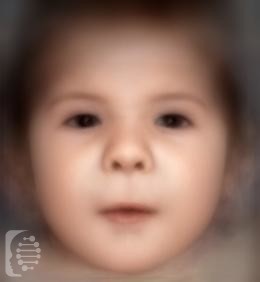What is Arthrogryposis, Distal, Type 2A (DA2A)?
Arthrogryposis, Distal, Type 2A, as it is also known, is part of a group of disorders that present with multiple congenital contractures, which make it difficult for individuals to move specific parts of the body.
To date, there have been just 100 cases diagnosed since it was first identified in 1938.
This syndrome is also known as:
Cranio-carpo-tarsal dystrophy; Craniocarpotarsal Dysplasia; Craniocarpotarsal Dystrophy DA2A; Freeman-sheldon Syndrome; Fss FSS Whistling face syndrome; Whistling Face-windmill; Vane Hand Syndrome
What gene change causes Arthrogryposos, Distal, Type 2A (DA2A)?
Mutations to the MYH3 gene on chromosome 17 are responsible for the syndrome. The condition is largely the result of de novo mutations on the gene, but it has also been found to be inherited in an autosomal dominant pattern.
Very rarely, research suggests that the condition is inherited in an autosomal recessive pattern, which seems to cause a more serious form of the syndrome, with more significant neurological disorders and more severe intellectual disability. Further research suggests it may also be inherited as an X-linked condition in very rare instances.
In the case of autosomal dominant inheritance, just one parent is the carrier of the gene mutation, and they have a 50% chance of passing it onto each of their children. Syndromes inherited in an autosomal dominant inheritance are caused by just one copy of the gene mutation.
In some cases, a genetic syndrome may be the result of a de novo mutation and the first case in a family. In this case, this is a new gene mutation that occurs during the reproductive process.
What are the main symptoms of Arthrogryposis, Dital, Type 2A (DA2A)?
- Defects and abnormalities in the hands, feet, head, and face are some of the main symptoms of the syndrome.
- Facial features of the syndrome include a high palate, a very small tongue, widely spaced and deep-set eyes, and crossed eyes.
- Other issues, particularly in infancy, include feeding difficulties related to swallowing, frequent vomiting, and a failure to thrive.
Possible clinical traits/features:
Strabismus, Microcephaly, Rocker bottom foot, Talipes equinovarus, Chin with H-shaped crease, Flat face, Camptodactyly, Shoulder flexion contracture, Spina bifida occulta, Dimple chin, Prominent forehead, Ptosis, Telecanthus, Narrow mouth, Short nose, Long philtrum, Malignant hyperthermia, Mandibular prognathia, Mask-like facies, Joint contracture of the hand, Kyphoscoliosis, Knee flexion contracture, Inguinal hernia, Intellectual disability, Muscle weakness, Flexion contracture of toe, Underdeveloped nasal alae, Hypoplasia of the brainstem, Postnatal growth retardation, Hip contracture, High palate, Abnormality of the skin, Nasal speech, Cryptorchidism, Arthrogryposis multiplex congenita, Malar flattening, Epicanthus, Deeply set eye, Hip dislocation, Abnormal auditory evoked potentials, Small for gestational age, Failure to thrive, Fever, Autosomal dominant inheritance, Autosomal recessive inheritance, Whistling appearance, Short neck, Ulnar deviation of the hand or of fingers of the hand, Seizure, Adducted thumb.
How is it diagnosed?
To find out if someone has a diagnosis of Arthrogryposis, Distal, Type 2A (DA2A), it is important to have a consultation and evaluation with a clinical genetic specialist. Specialists may also suggest specific genetic testing or other types of tests to help reach a diagnosis. FDNA’s AI technology can help speed up the diagnostic process by analyzing facial features and other health information.

